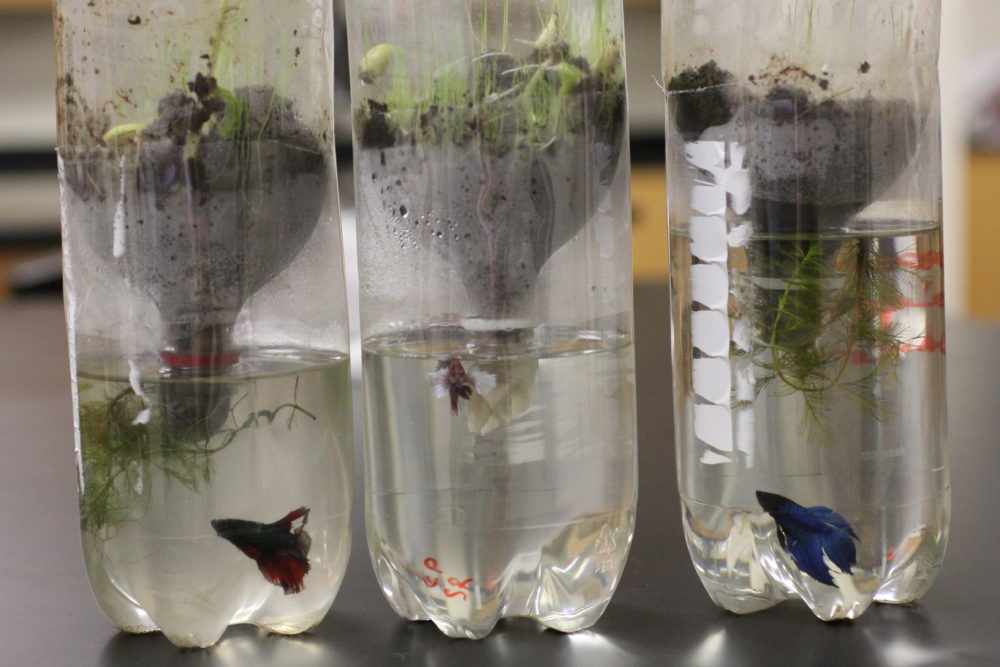AP Environmental Science classes are taking on the eighth annual Environment in a Bottle Project, where students build a miniature biome to sustain a betta fish.
Students brought two 2-Liter soda bottles into class on Aug. 28 and 29 and cut the bottles to form a plastic funnel, then they fitted the cut bottles together and places soil in the top half, and treated water in the bottom half.
“We’re learning about the hydrologic, carbon, and nitrogen cycles and how they circulate throughout the Eco Bottle,” junior Campbell Choate said.
Soon after, students brought in their betta fish and put them in the water portion of the ecosystem, and put a cricket in the top half. Then they conducted tests on the water to determine levels of temperature, dissolved oxygen, carbon dioxide, pH, ammonia, nitrate, and nitrite. Seeds were placed in the soil to produce oxygen, necessary for the survival of the fish in the sealed container.
“The plants produce oxygen for the fish and the cricket, they also get rid of some of the nitrogen waste from the fish and cricket,” AP Environmental Science teacher Craig Arkfeld said.
The fish will be left for a week and then students will record new test results based on how the levels of chemicals changed while it was a functioning ecosystem.
“I think using an actual fish is really exciting and I’m really looking forward to how the Eco Bottles turn out in the end,” Choate said.
